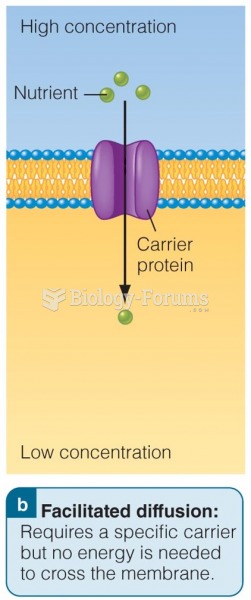Answer to Question 1
Correct Answer: 4
Rationale 1: Increased levels of progesterone cause a decrease in gastric tone and intestinal motility.
Rationale 2: High estrogen levels cause increased hydrochloric acid production, which may affect the absorption of certain acid labile drugs.
Rationale 3: An enlarging uterus presses against the stomach, resulting in decreased gastric emptying.
Rationale 4: Increased levels of progesterone increase pulmonary blood flow, resulting in higher serum levels for respiratory drugs.
Global Rationale: Increased levels of progesterone increase pulmonary blood flow, resulting in higher serum levels for respiratory drugs. Increased levels of progesterone, not decreased, cause a decrease in gastric tone and intestinal motility. High estrogen levels cause increased hydrochloric acid production, which may affect the absorption of certain acid labile drugs. An enlarging uterus presses against the stomach, resulting in decreased gastric emptying.
Answer to Question 2
Correct Answer: 4,5
Rationale 1: SSRI drugs are category C and do not cause fetal demise.
Rationale 2: Fluoroquinolone is category C and does not cause fetal demise.
Rationale 3: Acetaminophen is category B and does not cause fetal demise.
Rationale 4: Nonsteroidal anti-inflammatory drugs (NSAIDs) can cause fetal demise in the third trimester.
Rationale 5: ACE inhibitors are category D and can cause fetal demise.
Global Rationale: Nonsteroidal anti-inflammatory drugs (NSAIDs) can cause fetal demise in the third trimester. ACE inhibitors are category D and can cause fetal demise. SSRI drugs and fluoroquinolones are category C and do not cause fetal demise. Acetaminophen is category B and does not cause fetal demise.







